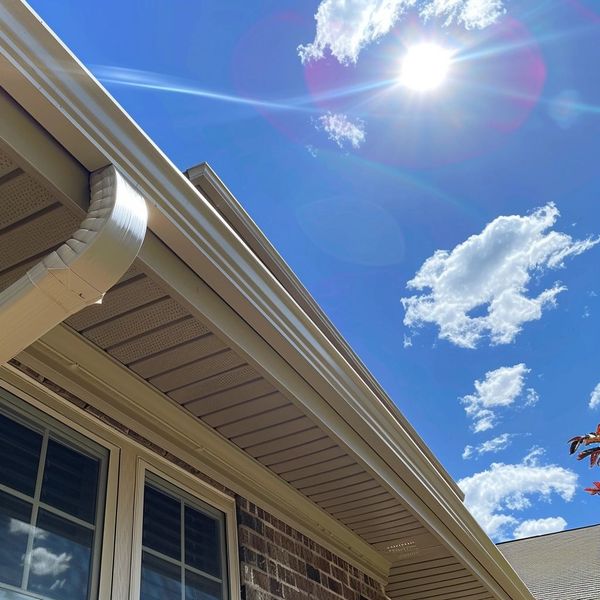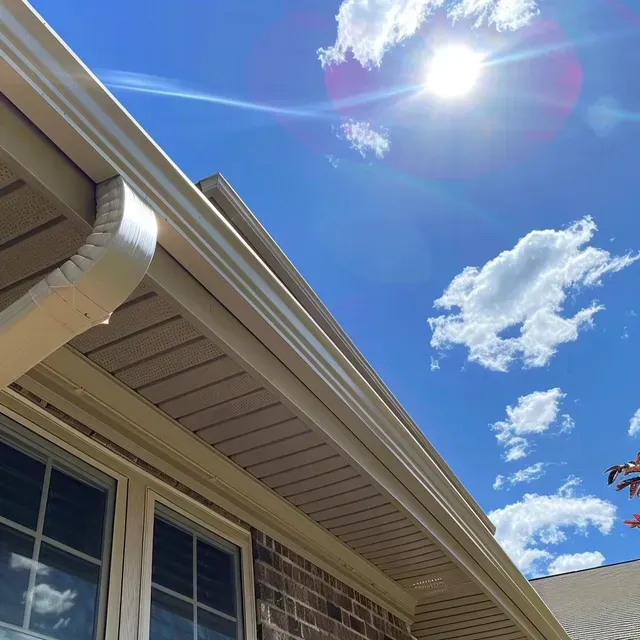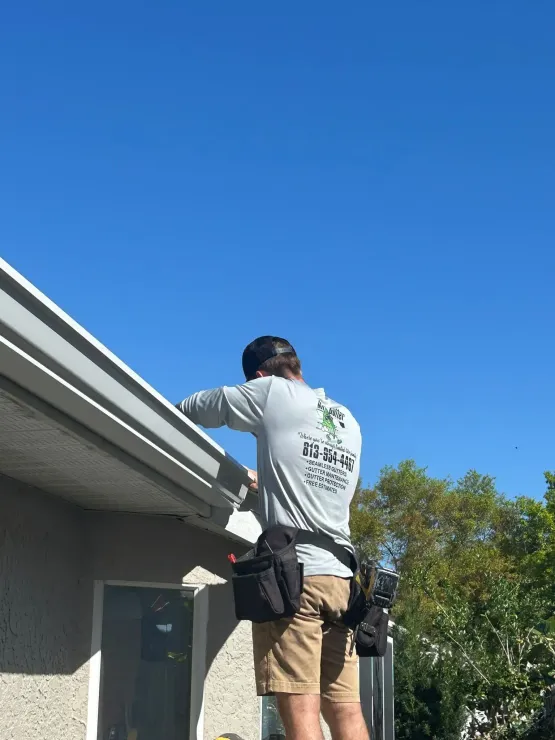Introduction
Gutters—those often-overlooked channels that guide rainwater away from your home’s foundation—are essential for maintaining the structural integrity of any building. However, before you embark on the journey of gutter installation, it's crucial to comprehend your local building codes. These regulations vary significantly across regions and municipalities, making it imperative for homeowners and contractors alike to be informed.
In this comprehensive guide, we will explore not only the gutter installation process but also delve deep into the nuances of local building codes that govern these installations. From understanding the importance of compliance to knowing how to select the right materials and systems, you’ll find everything you need to navigate local building requirements effectively.
Navigating Local Building Codes for Gutter Installation
When it comes to gutter installation, local building codes are not just bureaucratic red tape; they serve a critical purpose in ensuring safety and functionality. Local regulations may dictate various aspects of gutter systems, including size, material, downspout placement, and drainage requirements. Understanding these rules is vital for anyone considering an installation or replacement project.
Why Are Local Building Codes Important?
Local building codes are designed to ensure public safety and welfare. They help mitigate issues such as flooding, water damage, and poor drainage that can lead to severe structural problems over time. Compliance with these codes is not only a legal obligation but also a smart investment in your property’s longevity.

What Do Local Building Codes Cover?
Material Specifications: Different areas may have restrictions on what materials can be used for gutters (e.g., aluminum vs. copper). Gutter Size: Regulations often specify minimum gutter sizes based on rainfall patterns in the area. Downspout Placement: Codes may dictate how far downspouts should extend away from the foundation. Slope Requirements: Many jurisdictions require gutters to be installed at a specific pitch to ensure proper drainage. Installation Techniques: Certain installation methods might be mandated or prohibited based on regional considerations.How to Find Your Local Building Codes
Finding local building codes can often feel like searching for a needle in a haystack. Here are some tips:

- Visit Your City or County Website: Most municipalities publish their building codes online. Contact Your Local Building Department: They can provide guidance tailored specifically to your project. Consult with Professionals: Experienced contractors usually have up-to-date knowledge about local regulations.
The Consequences of Non-compliance
Ignoring local building codes can result in hefty fines and even necessitate costly reinstallation or repairs after inspections reveal violations. Therefore, it’s prudent not just to understand these rules but also to follow them meticulously.
Gutter Installation Process Explained
The gutter installation process might seem straightforward; however, there are multiple steps involved that require careful planning and execution.
1. Planning Your Gutter System
Before anything else, assess your home’s architecture and environment:

- Consider roof pitch Evaluate existing drainage patterns Identify areas prone to water pooling
2. Choosing the Right Materials
Your choice of materials can affect both aesthetics and functionality:
- Aluminum: Lightweight and rust-resistant Copper: Offers longevity but is more expensive Vinyl: Budget-friendly yet less durable
3. Measuring Your Home
Accurate measurements are crucial:
- Measure roof edges where gutters will be installed. Calculate total linear footage needed.
4. Installing the Gutters
The installation phase involves several substeps:
Marking locations for hangers Cutting gutters to size Attaching gutter sections through brackets or hangers5. Connecting Downspouts
Proper placement ensures effective water diversion:
- Install downspouts at corners or low points. Ensure they direct water away from foundations by at least 5–10 feet.
6. Final Inspection
Once installed, inspect all joints and connections for leaks or misalignments that could compromise performance.
Signs You Need a Gutter Replacement
Understanding when it’s time for a replacement rather than just repairs can save you headaches https://www.mrgutterinc.net/ gutter company down the line.
1. Visible Damage
Cracks or holes in gutters are clear indicators they need replacing.
2. Rust Stains
Rust stains signal deterioration; once they start showing up, replacement is likely inevitable.
3. Sagging Gutters
If your gutters begin sagging or pulling away from the house, it’s time for new ones.
4. Water Damage Inside Your Home
This could indicate major problems with your current system failing to channel water correctly.
Choosing the Right Gutter System for Your Home
Selecting an appropriate gutter system requires consideration of various factors:
1. Assessing Climate Conditions
Your local climate impacts which materials perform best:
- Heavy rainfall areas benefit from larger gutters. Regions prone to snow may require sturdier construction materials like aluminum or steel.
2. Architectural Style Compatibility
Ensure your chosen style complements your home’s design:
- K-style gutters work well with most modern homes, Half-rounds lend themselves beautifully to traditional architectures.
3. Budget Constraints vs Quality Needs
While cheaper options exist (like vinyl), sometimes investing in higher-quality systems pays dividends long-term through durability and reduced maintenance needs.
How Long Does Gutter Installation Take?
The duration of gutter installation varies depending on several factors:
Factors Influencing Time
Home Size:- Larger homes take longer due to increased linear footage.
- Some materials are easier (vinyl) while others require more labor (copper).
- Rainy days delay work progress significantly; sunny weather speeds things up!
On average, you can expect installations to take anywhere from 1 day for smaller homes up to several days if extensive custom work is involved.
FAQs About Gutter Installation
1) What is the average cost of gutter installation?
Costs vary widely based on materials and labor but typically range from $5-$15 per linear foot installed.
2) How often should I clean my gutters?
Regular cleaning every six months is recommended; however, if you live near trees shedding leaves frequently, quarterly cleaning may be necessary.
3) Can I install gutters during winter?
Yes! Just keep in mind that icy conditions might complicate matters; make sure surfaces are clear before beginning work!
gutter company4) What type of gutter guard works best?
Micro-mesh guards excel at keeping debris out while allowing water through efficiently—ideal for heavily wooded areas!
5) How do I know if my gutters need repair?
Look out for signs like leaking joints or rust spots indicating wear—if visible damage occurs regularly then replacements might be warranted instead!
6) What happens if I neglect my gutters?
Neglecting maintenance leads directly toward foundational issues due poor drainage—ultimately costing much more than preventive upkeep!
Conclusion
Navigating local building codes for gutter installation doesn't have to be daunting when equipped with knowledge about compliance requirements alongside practical insights into choosing systems suited specifically towards individual homes spaces!
By understanding each facet—from recognizing signs needing replacements through choosing suitable styles—we pave pathways ensuring our properties remain safe against damaging elements while enhancing aesthetic appeal too! So don’t hesitate—get started today! By adhering closely toward guidelines set forth within communities paired alongside quality installations performed correctly—you’ll enjoy peace-of-mind knowing both beauty & function harmoniously coexist atop those eaves!